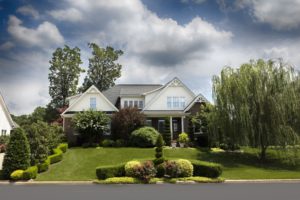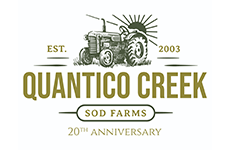
In vegetation, the equivalent condition of sunburn is called sunscald. What is it, and how can it affect your lawn? It’s time to find out.
Try to recall the last time you had a sunburn. As painful as it was, it receded eventually, didn’t it? It’s easier for humans to recover from sunburn than it is for the grass and sod in your lawn. Bushes, shrubs, trees, and plants need to be protected from the effects of sunlight as well. In vegetation, the equivalent condition of sunburn is called sunscald. What is it, and how can it affect your lawn? It’s time to find out.
What Is It?
All plants, especially the lawn and landscape you carefully curate, need sunlight to thrive. Unfortunately, sunscald is a very common condition that can happen any time of year, no matter which season – summer and winter are the same. For trees, sunscald tends to happen most often in fall and winter – when it’s colder out and unseasonably warm temperatures cause unexpected emergence from dormancy and some hesitant growth. However, plants, fruits, veggies, and foliage can experience sunscald during warmer weather such as we receive in spring and summer. They start to turn brown and look unsightly.
Spotting the Signs
Luckily, you can spot the signs of sunscald before this condition gets out of hand. For example, the foliage will look like it is wilting or dying. It will also turn a strange bronze color; this can happen to leaves on trees, blades of grass, and fruit will turn odd colors. Fruit and vegetables will also bruise and attract more insects and pests that ruin lawns, gardens, and landscapes.
How to Prevent It
Let’s talk about ways to prevent sunscald from happening. It all comes down to which part of your landscape and lawn you are trying to protect. For instance, you can wrap trees in white paper to reflect the sun’s rays. You can also try painting the tree white, but this will affect how the tree looks and alter your home’s curb appeal. For smaller plants, trees, bushes, and the grass on your lawn, you might want to try adding vegetation that can offer some shade. Using mulch is a great way to protect your soil and sod, especially if you are planning on starting a new garden or want to rejuvenate your lawn after a prolonged dry spell. Believe it or not, layers of straw can also help make a difference. Lastly, think about the pruning, placement, and mowing of the different components of your landscape and how to adjust it depending on the levels of sunshine you can expect for a certain day as summer rolls along.
Have More Questions? Stay in Touch!
Order early, and order often to ensure the best service possible. Contact us through our online page. Find us at 27616 Little Lane, Salisbury, Maryland 21801. Our phone number is 410-726-6103, and our fax number is 410-742-6550. Speak to Jason Anderson for Turf Grass Sales. Reach him by email at jason@quanticocreeksod.com. Finally, follow us on social media on Facebook, LinkedIn, and our blog!
